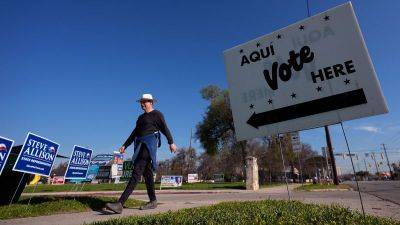Everything you need to know about this year's solar eclipse
A total solar eclipse will cross North America in April, offering millions of sky-watchers a rare opportunity to see afternoon skies temporarily darken and a “ring of fire” become illuminated overhead.
The eclipse on April 8 promises to be a major event because its path fortuitously cuts across Mexico, the continental U.S. and a small part of eastern Canada. In the U.S., weather permitting, sky-watchers in 15 states will have the chance to see the moon almost completely cover the sun, casting its shadow over the fiery orb and creating the effect of a blazing ring in the sky.
In all other states in the continental U.S., viewers will be treated to a partial solar eclipse, with the moon appearing to take a “bite” out of the sun and obscuring only part of it in the sky.
Here's everything you need to know about the coming total solar eclipse.
How to safely view a solar eclipse
People should never gaze directly at the sun during a solar eclipse, even when it is partly or mostly covered by the moon. Special eclipse glasses or pinhole projectors are required to safely view solar eclipses and prevent eye damage.
Sky-watchers should never view any part of the sun through binoculars, telescopes or camera lenses without specific solar filters attached to them. Eclipse glasses should not be used with them. Failing to take the proper precautions will result in severe eye injury, according to NASA.
During the few minutes of totality, when the moon is fully blocking the sun, it is safe to look at the total solar eclipse with the naked eye, but eclipse glasses should be used at all other times to look at the sun.
What is a solar eclipse?
Solar eclipses are essentially cosmic confluences, occurring when the sun, the moon and Earth align.







